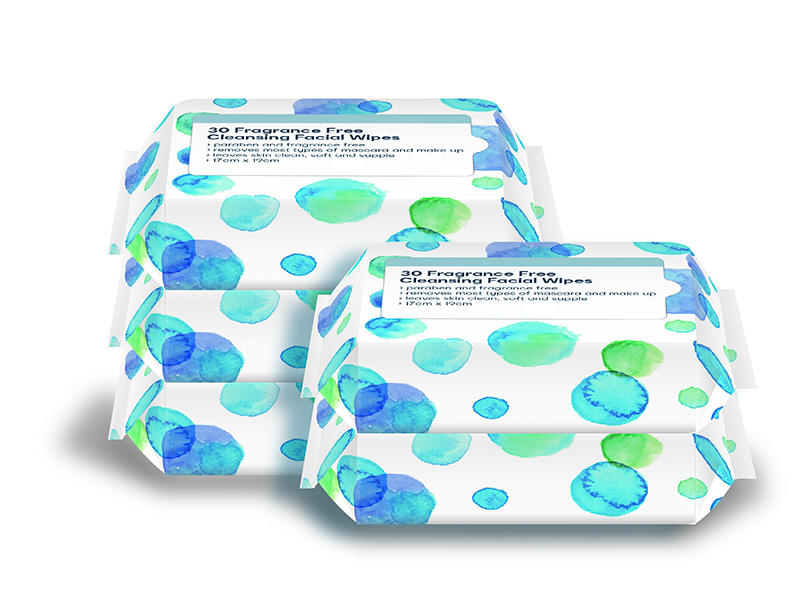In the daily cleaning and maintenance of the restaurant, the water absorption performance of the rag directly affects the cleaning efficiency and sanitation. Compared with traditional cotton rags, 5mm large dot spunlace nonwoven rags show significant advantages in water absorption performance, which involves multiple factors such as material structure, physical properties and actual application scenarios.
5mm large dot spunlace nonwoven fabric is manufactured using a unique spunlace process, which uses high-pressure micro-water flow to puncture the fiber web. When the high-pressure water flow is sprayed onto the fiber layer, the fibers entangle and embrace each other to form a stable nonwoven fabric with a three-dimensional structure. The thickness of 5mm gives it a more fluffy internal structure, and the gaps between the fibers are larger and more evenly distributed than those of conventional nonwoven fabrics. This special structure is like countless micro-water storage tanks, creating innate conditions for the rapid absorption and storage of water. When the rag comes into contact with water, water molecules can quickly penetrate into the material through the pores between the fibers and be adsorbed and stored using capillary action.
In contrast, traditional cotton rags are mainly woven from natural cotton fibers. Cotton fibers themselves have a certain degree of water absorption, but their fiber arrangement is relatively tight, and the yarn structure formed during the weaving process will limit the rapid diffusion of water. When cotton rags absorb water, water needs to gradually penetrate into the fiber and the gaps between the yarns. This process relies on the natural diffusion of water molecules, resulting in a relatively slow water absorption rate. At the same time, due to the limitations of the fiber structure, the saturated water absorption capacity of cotton rags is limited. After absorbing a certain amount of water, it is difficult to accommodate more liquid, which affects its performance in the scene of cleaning a large number of water stains.
In the scene of cleaning the kitchen countertops in restaurants, the water absorption advantage of 5mm spunlace non-woven rags is fully reflected. As an area where oil, soup and other liquids are frequently spilled, the kitchen has extremely high requirements for the water absorption capacity of rags. When a large amount of soup is spilled, the 5mm spunlace non-woven rag can quickly absorb water at the moment of contact with the liquid due to its special fiber structure. Its fluffy structure allows water to diffuse quickly inside the material, preventing liquid from gathering on the surface of the rag and flowing. When dealing with such situations, cotton rags often cannot absorb all the liquid in time due to their slow water absorption speed and limited water absorption, causing some soup to drip along the edge of the rag, which not only increases the difficulty of cleaning, but also may cause the liquid to flow to the ground, causing safety hazards such as slipping.
Further analysis from the perspective of physical principles shows that the high water absorption of 5mm spunlace non-woven rags is closely related to the wettability of the fiber surface and the capillary force between fibers. The surface of non-woven fibers treated by the spunlace process has good hydrophilicity, and water molecules are more likely to adhere and penetrate. At the same time, the capillary channels formed by the larger pores between the fibers can generate strong capillary suction and actively absorb water into the material. In contrast, the capillary channels between the fibers of cotton rags are relatively narrow and irregular, and the capillary suction generated is weak, and it cannot absorb water as quickly and in large quantities as spunlace non-woven fabrics.
In addition, the water absorption performance of 5mm spunlace nonwoven rags can remain relatively stable during repeated use. The fiber structure formed by the spunlace process has good toughness and resilience. Even after multiple washing and wringing operations, the gap structure between the fibers is not easily destroyed and can still maintain efficient water absorption capacity. However, after repeated use and washing, the fibers of cotton rags are prone to entanglement and compaction, resulting in smaller gaps between the yarns, a decrease in water absorption performance, and a significant reduction in cleaning effect.


 中文简体
中文简体 English
English Беларуская
Беларуская 한국어
한국어 Français
Français 日本語
日本語 русский
русский Español
Español












